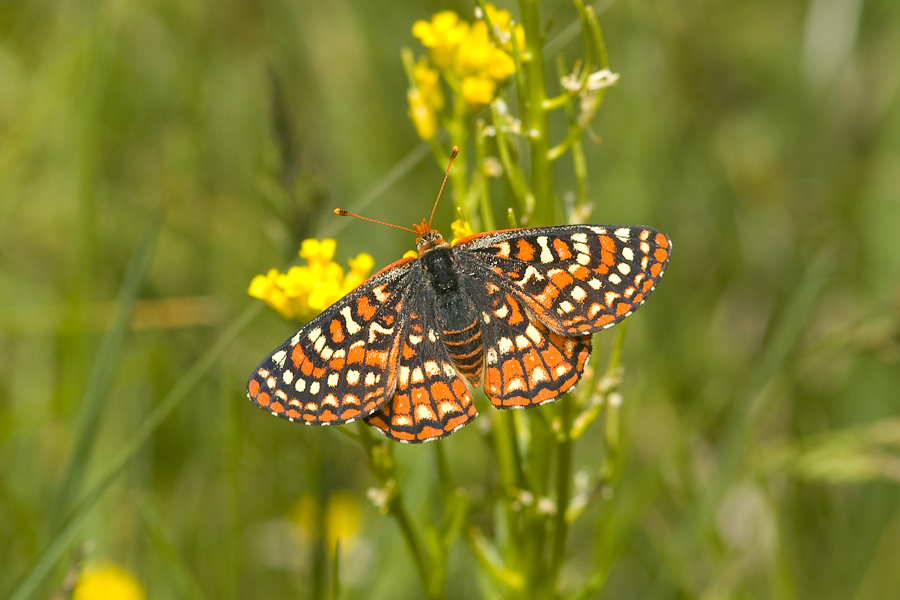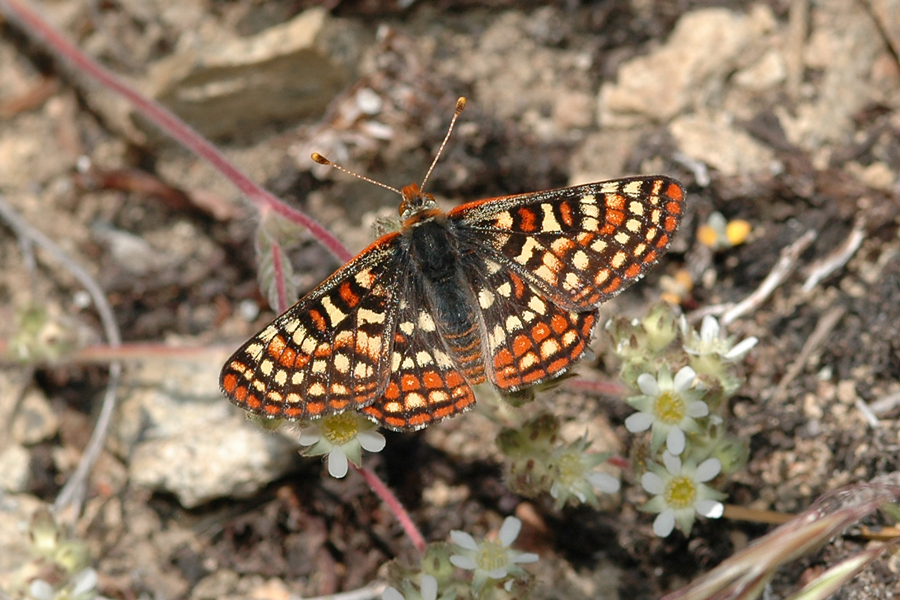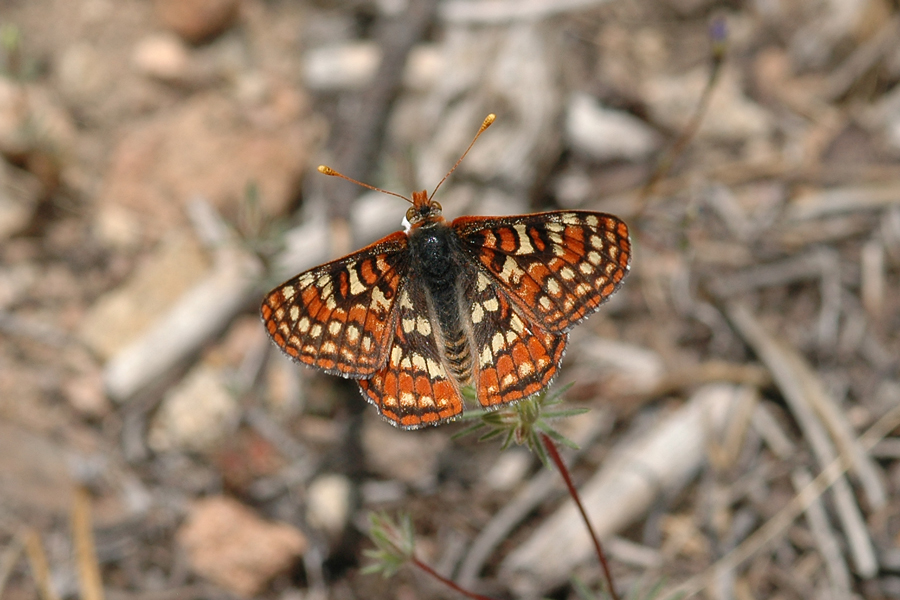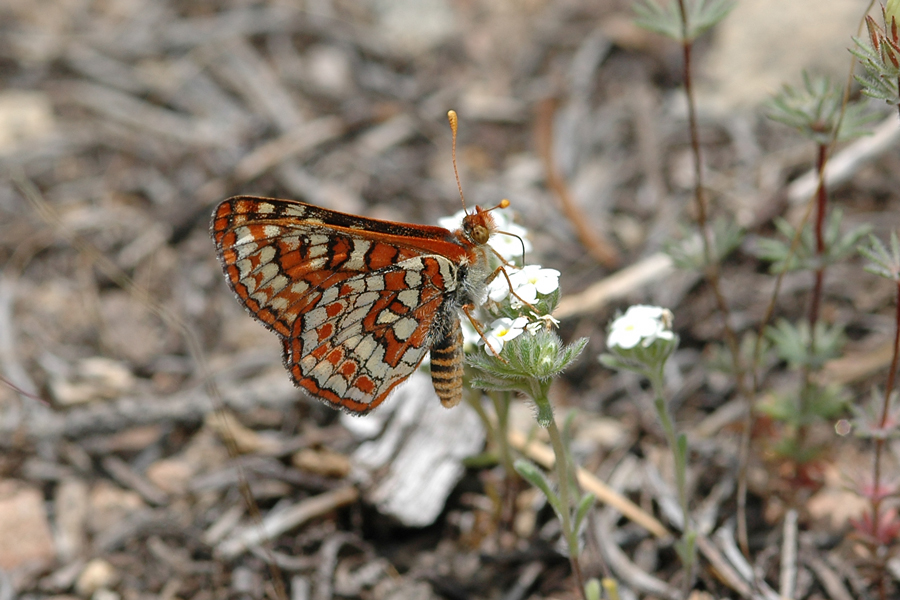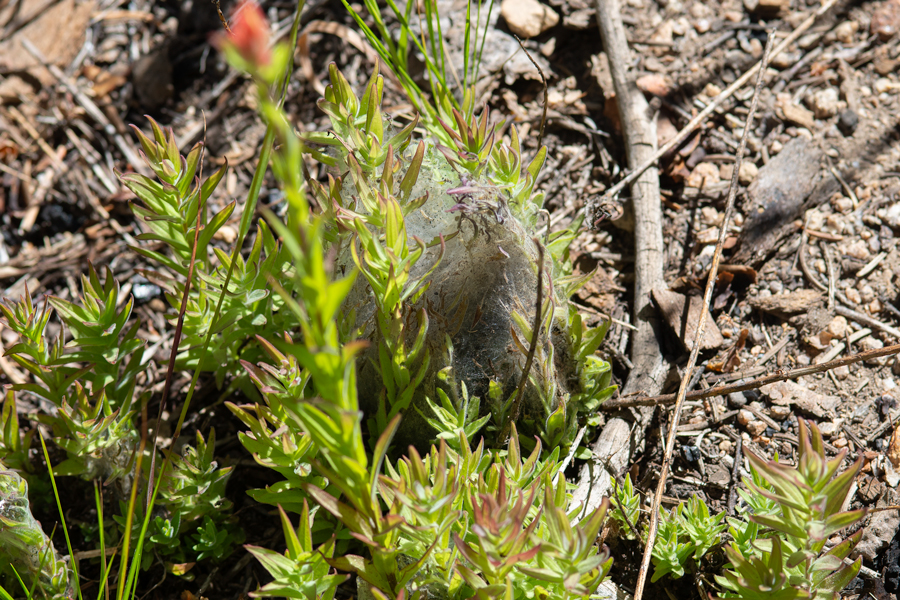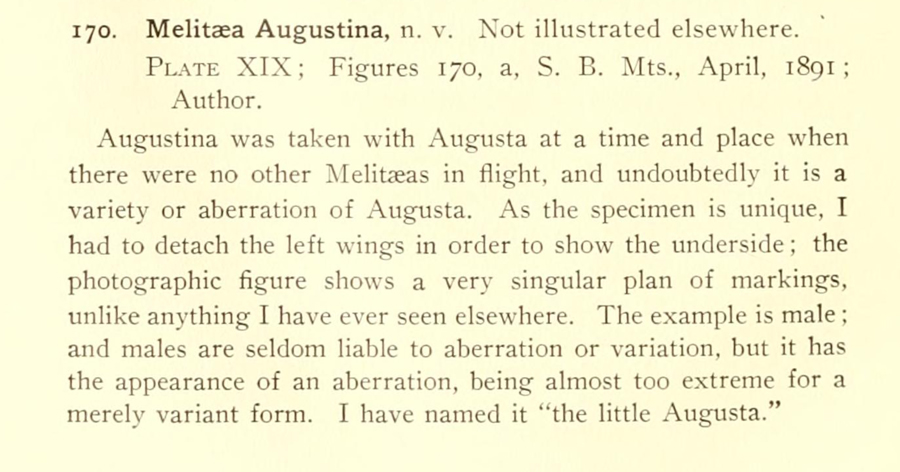Euphydryas editha augustina
Edith's Checkerspot
I know this butterfly from the Big Bear area, and it was named based on the San Bernardino Mountains populations, but it probably ranges into the southern parts of the Sierra Nevada according to Ken Davenport. This checkerspot can be common on certain hikes in May-June around Big Bear Lake as the single brood begins establishing another generation. The silk webs of larval nests begin appearing in June-July as the tiny caterpillars hatch and form protective shelters in their food plants, mainly species of paintbrush. Two plants I've personally seen caterpillars eating are Castilleja applegatei (the favorite) and Pedicularis semibarbata (not often used). There may be another species of paintbrush along Siberia Creek Trail that they use, but I haven't been able to identify it yet. The caterpillars overwinter as mid-instars at the base of the plants, and will begin feeding again as soon as the snow melts and the plants begin to sprout from the wet ground. They can have more than five instars as they feed, and can take shelter again and become quiescent if necessary. Finally they pupate and the big flight soon begins. Female adults deposit bunches of eggs on the plant leaves, and the race is on: they need to get to the third or fourth instar and they must enter diapause.
